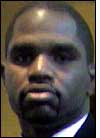Dec 19, 2007Eco-friendly men's clothing store and day spa Maskyelin intends to open its doors in King of Prussia, Pa., in April 2008 with an RFID system that will track products in the store and also allow customers to purchase items without standing in line. With the system, provided by Atlas RFID Solutions, Maskyelin will be better able to avoid out-of-stocks, while also arming its store-floor sales staff with handheld RFID interrogators that act as point-of-sale devices for purchasing an item without a cash register.
The 3,400-square-foot retail store will sell high-end men's apparel such as undergarments and socks, as well as men's cosmetics, toweling and other luxury items, all made from environmentally friendly materials such as bamboo. The in-store day spa center will also sell environmentally friendly products, according to the company's CEO, Jamiel Price, who cofounded the business with LaShanda Sharp. Price describes the store as an alternative for men seeking a place to pamper themselves.
"Our endeavor is focused on providing quality clothing and maintaining a green environment by using only sustainable fabrics," Price says, adding that he had an early interest in using technology for "a good sense of inventory control and an improved shopping experience." Price began looking at RFID technology in the summer of 2007, he says, as a way of ensuring that shoppers can find the items they are looking for, and to allow them to transact purchases quickly without having to wait in line.
At the Chinese factory that makes Maskyelin's goods, workers will attach a label containing an embedded RF IDentics Flex Wing EPC Gen 2 RFID tag to each item or box before shipment. Each tag is pre-encoded by RF IDentics with a unique ID number, and the label printed with such product information as size, color and style before being shipped to the factory, where workers attach the tags to the items as they are manufactured. A tag's ID number is then linked in a database with information about the product to which it is attached.
The items will be shipped directly from the factory to the store, where they will be unloaded at the receiving dock, placed on a pair of mobile receiving carts and wheeled into the back room. Built by Atlas RFID Solutions, each cart is equipped with an Omron V750 RFID interrogator and four antennas that capture the RFID tag numbers, says Mark Brown, Atlas RFID Solutions' director of solution services. The cart will read the item tags and transmit that data, via the Wi-Fi data network, to the store's back-end Macintosh-based management system, using Atlas RFID Solutions software. This will enable the store to maintain a record of the items it receives.
The items will then be placed on back-room shelves according to particular categories, such as style or brand. The shelves are identified by means of bar-coded labels. On a daily basis, an employee will use one of three Motorola MC9090G handheld RFID interrogators with built-in bar-code scanners to read the item tags and shelf bar-code labels, Brown says, thereby linking the items to the shelf on which they are stored. By using a bar-coded label rather than an RFID tag on the shelf, he explains, the store will be able to avoid capturing several shelf ID numbers simultaneously.
By contrast, in "put-away" mode, the handheld will be used only to scan the bar code of the shelf location for the items being put away, while the items' RFID tags will be scanned by the cart on which it is being transported.
At night, the Motorola handhelds will be used to conduct inventory checks on the sales floor and in the back room to determine if any items need to be re-ordered. That data will be sent wirelessly to the back-end system, alerting the store when specific products require replenishment.
If the line is long at the checkout counter, customers will have the option of working with a salesperson on the sales floor who is equipped with one of three additional Motorola MC9090G handheld interrogators that include a magnetic-stripe reader for credit cards. The salesperson will swipe the credit card's mag stripe and complete a sales transaction for the customer by scanning the RFID tags and issuing a receipt to that patron, who will then show the receipt to an employee at the exit door. The data will be transmitted wirelessly back to the store's Macintosh Light Speed POS system.
Phase Two of the project will take place at the day spa in 2008. During that phase, Price hopes to begin issuing RFID-based loyalty cards that could also be used in the store to track the owner's buying history. At the spa, the company hopes to install an RFID desktop reader to capture the card tag's unique ID number on a customer loyalty card that would link up with data about the customer in the back-end system.
According to Brown, Atlas RFID is now completing software development and customizing tags for the first store order. "I believe RFID will improve our efficiency," Price says. Following the completion of Phase Two, he hopes to install an RFID-enabled kiosk where shoppers can read a garment's RFID label and view information about other products in the store that might be a good match for that outfit.
Brown says RFID users need to look beyond "portals and conveyors" and consider more creative approaches, such as Maskyelin's plan. "Where is the competitive advantage in using technology the same way everyone else does?" he asks.


